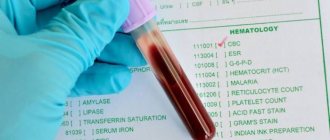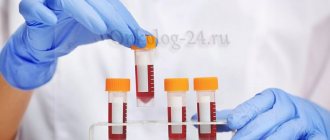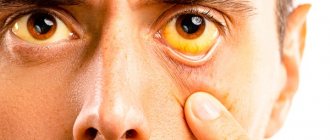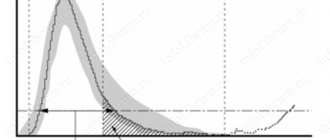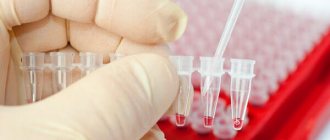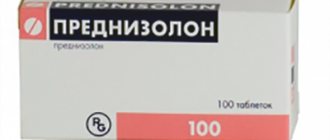Nitrates are salts of nitric acid, used primarily to fertilize plants (NO3-). Their common name in everyday life is saltpeter. Nitrates are also used for the manufacture of explosives, pyrotechnics, glass, some medicines, canned food, and fuel.
When entering the human body with food (mainly plant foods), nitrates are converted into nitrites. In addition, they can be formed in the urine under the influence of certain uropathogenic bacteria (for example, Escherichia coli, Proteus).
Sources of nitrites
Nitrites are salts of nitrous acid (NO2-). They appear in the human body in two ways: from the environment directly with food, and are also converted from nitrates under the influence of the enzyme nitrate reductase (in the gastrointestinal tract, urinary system).
In healthy people, a small amount of these salts is constantly present in the body without causing harm. The permissible daily dose established by the Ministry of Health of the Russian Federation corresponds to 0.2 mg/kg body weight (except for infants).
Interesting! In European countries, the maximum permissible daily dose of sodium nitrite is 0.1 mg/kg (except for infants).
Nitrites are a biological poison for the body, which causes the oxidation of normal hemoglobin to methemoglobin with subsequent disruption of oxygen transport to tissues and the removal of carbon dioxide.
Physiological hematuria
Non-pathological reasons for increased levels of red blood cells in urine include:
- Staying in conditions of elevated ambient temperature. This could be working in hot workshops, a hot microclimate in a bathhouse (sauna).
- Distress (constant neuropsychological tension provokes an increase in the fragility of small vessels).
- Passion for alcoholic drinks. Alcohol causes constriction of renal vessels and increases capillary permeability.
- Sports or other physical overload. Capillaries and larger renal vessels can rupture from excessive stress.
Violation of the functions of the urinary system causes the aggressive effects of hot spices and sauces (if abused).
Detection of Bld in urine can be caused by incorrect use of certain medications: antithrombotic drugs (anticoagulants), phospholipids, drugs that improve blood microcirculation (Pentoxifylline and its analogues), drugs used to treat oncological tumors (cytostatics). In women, drug-induced hematuria can be caused by inappropriate hormonal contraceptives.
What do nitrites in urine mean?
The appearance of an increased level of NO2- in the urine of an adult is possible in two situations: when salts enter the gastrointestinal tract (with food or contaminated water) and in the presence of bacteria in the urinary tract.
Many microorganisms (usually gram-negative) break down nitrates with a special enzyme to form nitrites. The greater the bacterial contamination of urine, the higher their content in the sample intended for analysis.
An interesting fact is that the detection of NO2- in the material indicates the presence of bacteria, but does not confirm the presence and localization of the inflammatory process. Inflammation can be located in any part of the urinary system, but there is also the concept of asymptomatic bacteriuria.
To clarify the diagnosis, urine culture, ultrasound of the pelvic organs, a three-glass test, and other methods are used.
On a note! Normally, urine is sterile and does not contain nitrites! Normal values of other indicators of general analysis can be viewed in the table (follow the link).
Risk factors
So, the appearance of NO2- in a urine test most often means the presence of bacterial contamination. Some people are more susceptible to urinary infections and are at risk.
The following patients have a high probability of detecting nitrites in urine:
- Women - due to the characteristics of the genitourinary system (short and wide urethra, close proximity of the vagina and anus). Especially during menopause.
- Elderly patients over 75 years of age (decreased local immunity and the level of protection of mucous membranes, deterioration of pelvic circulation, concomitant pathologies).
- Men suffering from prostatic hyperplasia or prostatitis (impaired timely emptying of the bladder).
- Pregnant women (hormonal fluctuations, increased intra-abdominal pressure, decreased immunity).
- Patients after operations on the abdominal organs, as well as after urological interventions, including diagnostic ones.
- Diabetes mellitus, proven immunodeficiency (long-term use of cytostatics, glucocorticoids, HIV, etc.).
Why is this test prescribed?
Urine is a biological fluid in which the final waste products of the body are released from the human body.
It is conventionally divided into primary (formed by filtration in the glomeruli from blood plasma) and secondary (formed by reabsorption of water, necessary metabolites and other solutes in the renal tubules).
Disruption of this system entails characteristic changes in normal TAM indicators. Thus, the analysis can show:
- 1 Metabolic abnormalities;
- 2 Signs of urinary tract infection;
- 3Effectiveness of treatment and diet;
- 4Dynamics of recovery.
A person can contact a laboratory for a urine test on his own initiative if he notices sudden changes in his physical characteristics. But more often the patient receives a referral from a specialist at the clinic, who then deciphers the results obtained.
OAM is included in the list of basic studies during preventive examinations of the population, clinical examination, it is prescribed when seeking medical help from a specialist, during pregnancy, during hospitalization and in some other cases.
A general urine test consists of a sequential study of:
- 1Physical characteristics of the sample;
- 2Chemical composition;
- 3Microscopic examination of sediment.
Symptoms of a urinary tract infection
Since the detection of nitrites usually indicates intensive proliferation of bacteria in the urinary tract, signs of the disease may precede laboratory determination of NO2-. It is worth saying that this happens most often, but not always.
There is a concept of asymptomatic bacteriuria, when, against the background of complete health and absence of complaints, microorganisms are detected in large numbers in the OAM. This situation requires clarification, additional examination and treatment.
Clinical signs of a bacterial urinary tract infection:
- Cutting, pain, burning during urination, as well as after it (urethritis and cystitis).
- Frequent false/true urges.
- Nagging pain in the lower or lateral abdomen, lower back (cystitis and pyelonephritis).
- Feeling of fullness of the bladder, pain.
- Change in urine color, pungent odor, presence of additional impurities (blood, pus, sediment).
- Fever, headache, weakness.
- Nausea, swelling of the face and limbs.
Very often, nitrites are detected in acute or chronic pyelonephritis, cystitis, and urolithiasis.
Treatment
The presence of nitrites is only one symptom of infection with certain bacterial infections. Moreover, these data do not even make it possible to find out which pathogen caused the disease. To make a diagnosis, bacterial culture of urine, ultrasound of the kidneys and ureter, ultrasound of the bladder, and so on are prescribed. In accordance with the data obtained, a course of treatment is developed.
Therapy usually involves antibiotics and vitamin complexes. Medicines are prescribed only by a doctor. One should take into account not only the underlying disease, but also all concomitant ailments, the patient’s age, and general condition.
- So, for cystitis, furagin is prescribed - it is used for almost all infectious and inflammatory diseases of the excretory system, or palin - an antibiotic of the quinol group. Treatment is supplemented with ibuprofen if cystitis is accompanied by severe pain, as well as herbal remedies - cystone, for example.
- Treatment of pyelonephritis is much more difficult and takes more time. Depending on the type of pathogen and sensitivity to a particular antibiotic, a variety of drugs are prescribed: from ampicillin - a representative of penicillins, to tetracyclines and aminoglycosides - amikacin, for example. As a rule, the antibiotic is administered intravenously or intramuscularly. To improve blood circulation in the kidneys, therapy includes appropriate medications - chimes, trental, heparin. For pain relief, non-steroidal anti-inflammatory drugs are prescribed - Voltaren is best, as it is the least toxic.
Treatment may be accompanied by physiological procedures - electrophoresis, paraffin baths, diathermy, as well as herbal medicine.
Nitrites in urine are a sign of disease caused by bacterial infections. For such indications, an examination should be carried out immediately, even if no external symptoms are observed. The detection of nitrites during a general urine test is the reason for prescribing the following studies.
How to detect nitrites in urine?
You can do this at home using special test strips with an indicator, sold in pharmacies without a prescription. The mechanism of their action is based on the reaction of the Hiss reagent with NO2- and the coloring of the indicator in a certain color.
The degree of coloring corresponds to the level of salt content in the sample. Today there are a large number of test strips for performing urine analysis using the express method. The most famous manufacturers: Bayer, Roche, Maromed, Biosensor and others.
The sensitivity range is more than 2 mg of nitrites per liter of urine (pink color).
You need to know that the level of nitrites during infections depends on the type of microorganisms (Escherichia coli, Proteus, Klebsiella, Salmonella) and their quantity.
Reasons for a false positive result:
- Taking medications containing phenazopyridine (analgesic).
- Long-term storage of the material in a warm place (more than 4 hours). During this period, under favorable conditions, bacteria trapped in the container multiply naturally. Therefore, the test result will be positive.
Reasons for a false negative result:
- High concentrations of vitamin C distort the reaction to produce barely noticeable color at high NO2- levels. In this regard, analysis is possible only 10-12 hours after taking vitamin C.
- Increasing the daily amount of urine excreted (frequent urination) reduces the level of nitrous acid salts. It is recommended to drink less fluid before taking the test.
- Eating a small amount of plant foods or fasting leads to a low intake of nitrates, and, therefore, the indicator is unreliable even with severe bacteriuria.
- Contamination of the urinary tract with gram-positive bacteria.
Rules for preparing for the examination:
- 1A fresh morning urine sample is used.
- 2You need to stop taking all medications, especially antibiotics (3-5 days before).
Clinical urine analysis at home using test strips: pros and cons
I would like to talk about a lot today. And definitely don't turn this post into a review of a can of stripes. What self-control tools do you have at home?
In general, we always rather insist: anything like this should be kept at home, even if there are no prerequisites for this as such. Moreover, not just store it, but also systematically use it. A healthy person should have a glucometer, tonometer, scales, and test strips for rapid urine analysis at home - this is absolutely normal.
Systematic self-control is a great thing that will preserve your health and save money in the long run. You will definitely never, for example, go once a week and take general tests to the clinic, but once a week pricking your finger in the morning is no problem, getting on the scales once a day in the morning or taking a blood pressure reading in the evening is easy. And so on.
Everything diagnostic that is very easy to buy and easy to decipher should be at hand at home.
Decoding the results
This is the weirdest part, of course. We have already shown how this works using glucometers as an example. The task of modern “gadgets”, by and large, comes down not to being accurate, but to falling within a certain range of values.
Almost all modern devices have a legal error, which, in principle, reduces all work to the principle of a traffic light: green (normal) - orange (borderline value) - red (higher), etc. This is an absolutely normal story.
In this sense, urine test strips, for example, are the most harmless and honest: in general, any strips that work on the principle of changing color (there are a lot of them) are like that.
You can keep more or less correct data records by using only one device at all times. And there is certainly no point in double-checking one household appliance with another. Otherwise it will be something like this:
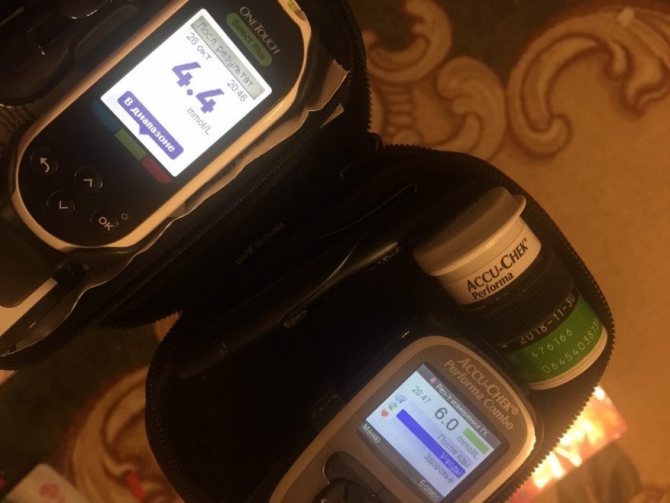
Both are accurate
In general, you need to focus on colors, and not on exact numbers, as practice shows. Let's say in the picture above the sugar level is basically the same, despite the spread of one and a half units. Of course, there are also devices where, firstly, accuracy is critical, and, secondly, which only a specialist can decipher. For example, a home ECG machine. But even there, if you remember, you can get a basic decoding at the “plus-minus-traffic light” level without leaving your computer:

There are almost no such problems with visual test strips
It’s definitely a traffic light here. In general, many test strips (even those that will be discussed) still provide the ability to identify specific numbers, but many indicators often fit into the scale “detected/not detected”, “a lot/little/very much”, etc. The task of analysis is to correctly decipher colors - this is the main problem of the visual test.
Some test strips can be used with special analyzers. These are electronic devices that eliminate all subjective errors, correctly recognizing colors. We wrote a review of one of these.
But in general, relatively neutral colors are quite contrasting.
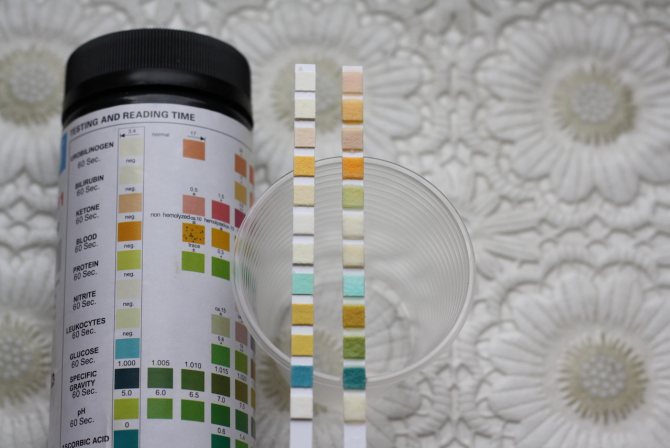
On the left is a clean test strip, on the right is already analyzed.
The strips are compared with the scale: as a rule, all data can be read immediately from the jar. The vast majority of reagent zones in strips from different manufacturers are made the same way, so you can navigate using some general table.
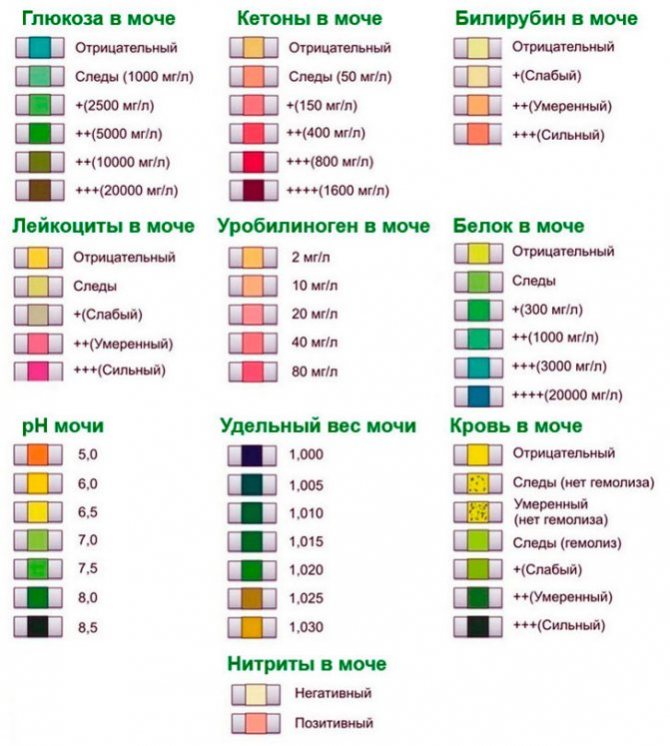
We settled on DIRUI test strips - for them the scale looks like this.
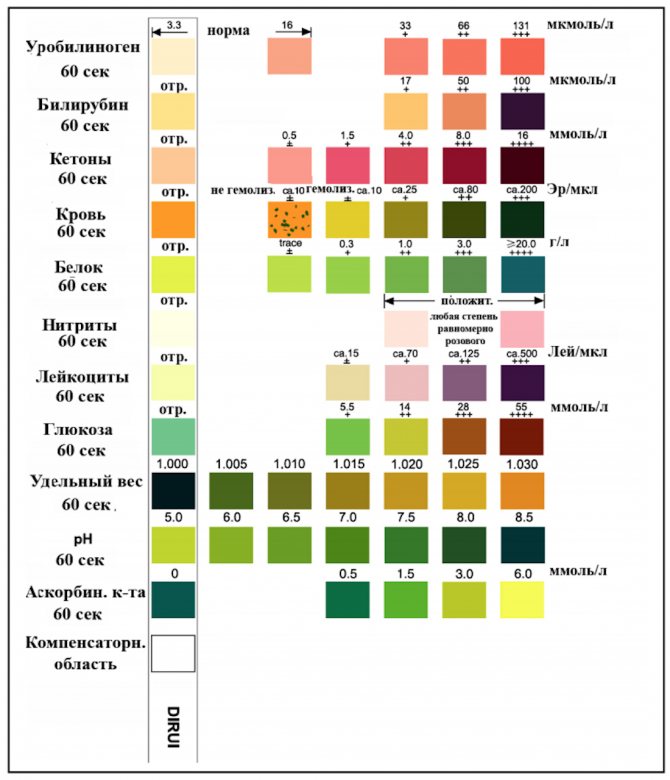
It is also printed on the jar:
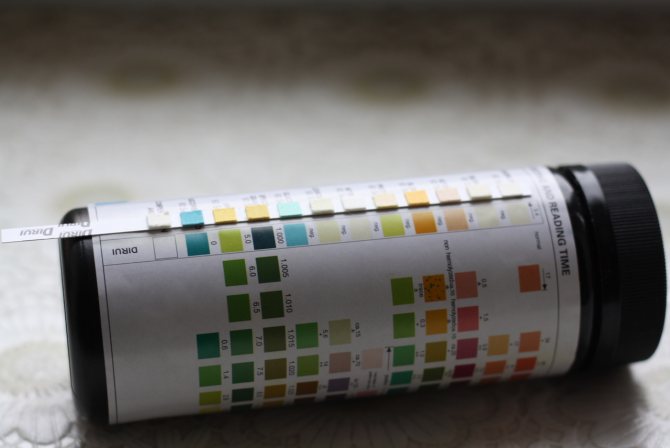
Is the data accurate?
Yes, there are no problems here. Moreover, most parameters in clinical analysis generally boil down to “detected or not detected.” Here, rather, it is necessary to say the following: test strips are somewhat inferior in information content. The general analysis on test strips comes down to 11 metrics - in the clinical sheet there are a little more of them. Let's compare.
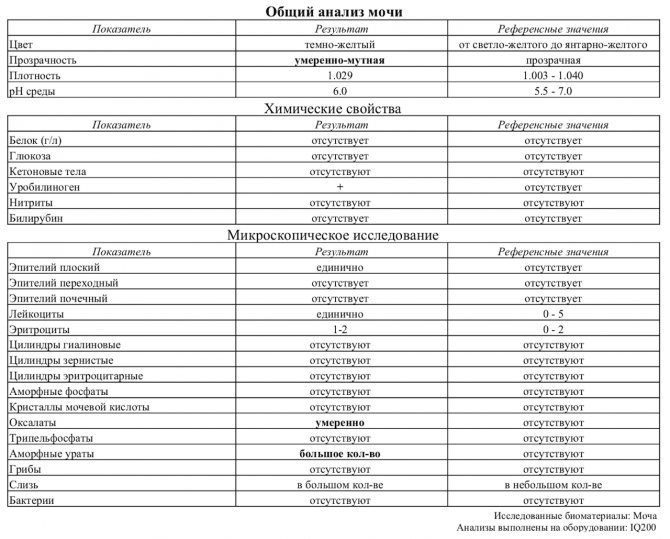
In general, analysis in the laboratory is carried out in five directions, including biochemical, microscopic, microbiological, etc. It is clear that the data will be a little more complete. Plus, of course, the strips will not give any answer to the color and smell. But basically, the focus is on those same 11 parameters:
- Glucose (GLU)
- Bilirubin (BIL)
- Relative density (SG)
- pH
- Ketone bodies (KET)
- Hidden Blood (BLD)
- Protein (PRO)
- Urobilinogen (URO)
- Nitrites (NIT)
- Leukocytes (LEU)
- Ascorbic acid (VC)

In short:
Relative density (SG). Norm – 1010−1023
An indicator for assessing the ability of the kidneys to concentrate urine, or perform its main function, where 1023 is the minimum upper limit at which the kidneys are considered healthy. Result on test strips: 1020 - 1023 upon visual inspection
.
Urine acidity indicator (pH). Norm – 5.0−7.0
The indicator is often dictated by diet, but if there is a systemic deviation from the norm, it should raise questions. A decrease in the indicator is typical for conditions of dehydration, prolonged fasting, and diabetes mellitus. Elevated numbers may indicate renal failure or tumors of the genitourinary system. Result on test strips: up to 7
.
Protein (PRO). Norm – up to 0.033 g/l
Normally, it is not detected during clinical analysis, but there may be both episodic and systematic increases. Episodic surges can be associated with physical activity, work, and stress. Chronic may indicate urinary tract diseases (cystitis, urethritis), tumors, pyeloniphritis, etc. Not detected on test strips
.
Glucose in urine (GLU). There is no norm
With glucose, everything is more or less clear. Most often, its presence in the urine indicates diabetes mellitus. However, there may be other reasons for the appearance - from overeating to a heart attack. No test strips detected
.
Ketone bodies (KET). There is no norm
Acetone and related substances most often indicate decompensated diabetes. Should not be found in urine. A noticeable concentration can also occur against the background of binge drinking, acute pancreatitis and in some other cases. Test strips - not detected
.
Bilirubin (BIL). There is no norm
Normally, it is not determined, and any positive result may indicate irreversible disorders in the liver, from viral hepatitis and cirrhosis to tumors.
The test strips have a controversial value. They show a range of norms from negative to light orange (17), which can be read both as normal and as “weak presence.”
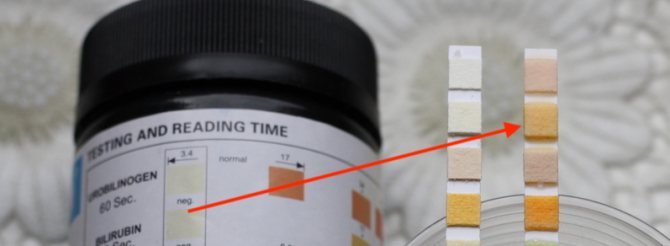
General clinical analysis did not find
.
Urobilinogen (UBG). Normal is 17 µcol/l or less
A bilirubin derivative should normally give a negative result. A positive test may indicate intravascular destruction of red blood cells. Urobilinogen also appears during resorption of hematomas, acute hepatitis, poisoning and liver tumors. Can be detected in various intestinal diseases. Test strips - positive. Coincided with clinical analysis
.
Nitrites (NIT). Norm - absent
Normally - none. Most often, a positive test indicates the presence of some bacteria that causes inflammation. Test strips - negative.
Blood in the urine (BLD). Norm - absent
You can determine a large amount by eye - the urine will change color. A small amount is not always something dangerous: it can be a consequence of consumption of berries, physical activity or stress. There are more dangerous pathologies: urinary tract infections, benign/malignant tumors, etc. Test strips - negative
.
Leukocytes in urine (LEU). Norm - single values
Leukocytes are always present in the urine, but most often the values are single: in clinical practice they are limited to the range of 0 - 5. Exceeding the norm may indicate cystitis, urethritis, or prostatitis. This is also a laboratory sign of urolithiasis. Test strips - within normal limits
.
Ascorbic acid (VC). Normal - present
Vitamin C is present in the body. So availability is the norm. There may be more ascorbic acid, there may be less. Actually, the analysis should confirm the presence within normal limits. Deviations can have different reasons. According to test strips - present
.
Comparison table: clinical test vs strips
| Data | Test strips | Laboratory analysis |
| Glucose | No | No |
| Bilirubin | Visually within normal limits | Absent |
| Bilinogen | Yes | Yes |
| Density | Visually from 1.025 - 1.030 | 1.029 |
| pH | Visually 6.5 | 6 |
| Ketones | No | No |
| Blood | No | There is nothing directly to compare it to |
| Protein | No | No |
| Nitrites | No | No |
| Leukocytes | Fine | Fine |
| Ascorbic acid | Fine | There is nothing directly to compare it to |
The accuracy and reproducibility of such test strips is quite high. At the same time, it should be noted that. Most often, test strips are sold in packs of 50 and 100 pieces. This is quite a lot, even for a family. But in fact, as such, the actual shelf life has no power over them. Even expired ones show reliable data. There's not much to spoil there. That is, this means that the thing is long-lasting.
Speaking of price. Depending on the number of pieces in the package, from 50 to 100, the price fluctuates by half and from 700 to 1500 and above. The test strips we worked with cost 1,500 rubles, there are 100 pieces in a package.
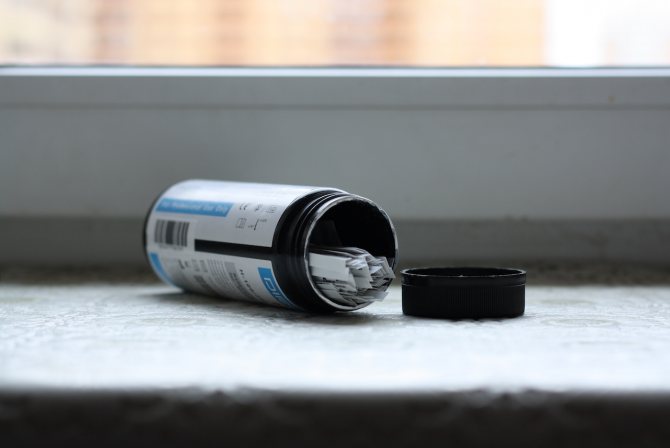
How often should this be done?
In general, from the point of view of “recoupment”, such a bank is quite profitable: the average cost of a general analysis in a private clinic is not high, but 300 - 350 rubles for 1 analysis will still be charged. A family of three or four people will pay for it with five stripes.
What to do with another 96 and how often should the indicators be monitored? Strictly speaking, despite the fact that this is the most accessible and cheapest diagnostic method, it is, of course, not useless. A general analysis can reveal some diseases of the kidneys, liver, and prostate diseases even at the asymptomatic stage:
General urine analysis:
- Diagnosis of kidney diseases: nephritis, nephrosclerosis, amyloidosis, urolithiasis, tumors
- Diagnosis of pyelonephritis, diseases of the bladder, prostate gland
- Detection of early signs of diseases
Usually prescribed:
- The first visit to the doctor is a mandatory examination, regardless of the current or suspected diagnosis
- For urinary tract diseases
- For kidney diseases
- As an annual preventive examination
- To assess the course of various diseases and evaluate the effectiveness of treatment
- After infectious diseases
In fact, not that often, but if you have something like marked test strips in the house, you can monitor the dynamics once a month. This is a prevention from the “it can’t get worse” series. There are also groups of users who can and should undergo such analysis more often. For example:
For control after operations, in patients with kidney stones during the prevention of recurrent stone formation, in pregnant women with the threat of infections, gestosis, in children with vesicoureteral reflux, chronic pyelonephritis, during differential diagnosis, etc.
At the same time, some of these patients may be immobile, for example, patients after operations, so taking the test at home in a calm, stress-free manner is one of the best solutions. In general, having such a self-control tool is not a stupid decision, and once or a couple of times a month for three or four family members, such a bank no longer seems “endless.”
Advantages and disadvantages
Of the disadvantages of any home self-analysis, self-medication seems to be the biggest. Here you need to be able to draw correct and unhurried conclusions, and have a good doctor for consultation.
From a functionality point of view, there are no negative pitfalls: the stripes determine the indicators quite accurately, and if there are no problems with distinguishing colors, then you will not draw unnecessary conclusions. But the human factor is, of course, always a minus: the lighting was wrong, I looked at it from the wrong angle, but still the colors are quite contrasting. Those who do not trust themselves can take another look at the home analyzer from our review. In Russia it costs 31,500 rubles, but this is more a solution for clinics.
The strips bend easily. This is important because urine collection containers most often have compact sizes:
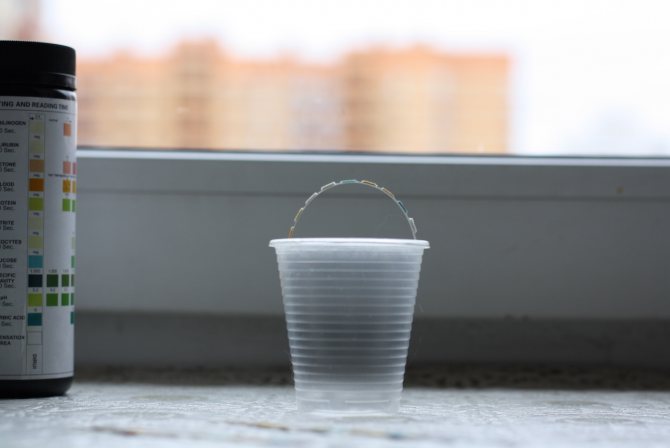
But from this point of view, there will be no problems: the sample can be taken evenly and quickly by slightly bending the strip. The advantage is timely, quick results on key analyzed parameters with high accuracy. The main thing is to follow the instructions (there are plenty of them included). The main thing is the shelf life of the material - no more than two hours, and the period of visual analysis - 60-120 seconds.
You can also buy express strips for general urine analysis in our store. You can also use a 5% discount coupon: DIRUIH11
. Valid until the end of April or while supplies last.
Take care of yourself! And collect, if possible, a small family geek first aid kit.
Features in pregnant women
The appearance of nitrites in the urine of pregnant women is a very dangerous phenomenon. Any urinary infection can cause inflammation in the kidneys - gestational pyelonephritis.
During the gestation period, it can cause a number of complications that threaten the health of mother and child:
- 1 Termination of pregnancy at any stage.
- 2Eclampsia with increased blood pressure and severe edema.
- 3Impaired uteroplacental circulation, intrauterine growth retardation.
- 4Fetal infection.
Thus, the detection of bacteriuria in pregnant women should not go unnoticed. It is necessary to repeat the OAM, do a bacterial culture, and according to indications, an ultrasound of the kidneys or bladder is performed.
Important! The absence of nitrites does not exclude infection. Normal indicators: normal level of leukocytes in the morning portion, absence of bacteriuria and any complaints from the urinary system.
The appearance of nitrites in a child’s discharge
Parents are advised to pay increased attention to the condition of their baby’s urine. If urine sharply changes its quality - it becomes cloudy, acquires a foul odor, or even slightly changes color - this should already be a pretext for visiting a pediatrician for a full examination.
Most often, an increase in the level of nitrites in the analysis in children is observed with bacterial lesions of the urethra. A similar disorder in young patients occurs after eating various foods, especially fresh fruits and vegetables.
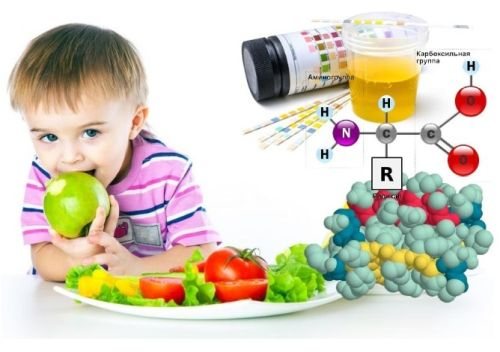
And all because modern producers use special chemical fertilizers to grow fruit-bearing plants. These substances not only improve the quality of the soil, but also increase the speed of fruit ripening. One bad thing is that these compounds are insoluble, they enter the body of adults and children, and are then excreted in the urine. Therefore, when nitrites form in the urinary tract, the fluid secreted by the child changes its odor and color. At the same time, a small patient often exhibits various urinary disorders.
During the initial examination of such a baby, the doctor may not detect visible changes in the condition of his genitourinary organs, which would indicate the presence of nitrogenous salts in the discharge. In this case, children must undergo laboratory testing of urine and blood. Before performing it, it is forbidden to change the child’s usual menu, give him vitamins and other medications. To ensure the reliability of the results obtained, a repeat test for the content of nitrogenous bases is carried out after 2-5 days. And if during the second study nitrites are found in the urine, this means the presence of inflammatory reactions in the small body. This is how vaginitis, cystitis, urethritis, pyelonephritis, bacterial infection of the intestine, and glomerulonephritis manifest themselves. The doctor begins to look for the cause of the disorder in order to further eliminate it.
Nitrites in newborns and infants
The formation of nitrous acid salts in the urine of infants is most often caused by the presence of bacterial pathogens that primarily affect the bladder. Sometimes there are cases of combined infection, when gram-negative microbes and herpes viruses actively multiply in the urethra of a baby. To identify the cause of the appearance of nitrites in the urine of a small child, it is necessary to submit the excreted liquid to a laboratory for analysis. After collection, children's urine should be delivered for testing as quickly as possible.
The results of a general urine test in newborns and children in the first year of life are often false positive. This happens due to the influence of the following negative factors on the collection process:
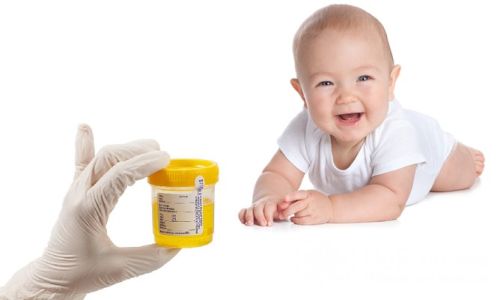
- It is quite difficult to obtain urine for analysis from a baby - the baby does not understand what they want from him and resists in every possible way. Parents are nervous and try to somehow help the child urinate into the container. At the same time, the risk of infectious pathogens penetrating into the biomaterial from the hands of adults and the skin of the baby itself increases.
- In infant boys, minor inflammation of the glans and foreskin of the penis often occurs. In such a situation, the test liquid is additionally contaminated with bacterial microflora, and the study shows an increase in nitrites in the urine.
- An increase in the content of nitrogenous bases in the urine of young children is often a consequence of poor genital hygiene.
Important! Nitrites in the urine of an infant appear due to prolonged use of diapers. Inside such a device, elevated temperature and humidity are created - an excellent environment for the development of various bacteria (even their own, opportunistic ones). Such a baby always has prickly heat on the skin of the perineum and external genital organs, and the normal functioning of the kidneys and the entire urinary system is disrupted.
What to do if there are changes in urine analysis?
If a general analysis (GAM) reveals nitrites, but there are no complaints, then, first of all, you need to contact your doctor for a second referral.
The second time, morning urine collection is carried out according to the following rules:
- 1Cancel antibiotics 5 days before the study.
- 2 Stop taking vitamin C 10-12 hours before.
- 3 Limiting fluid intake the day before, plant-based diet (cabbage, spinach, carrots).
- 4 Sterile container (it is better to purchase a disposable container at the pharmacy).
- 5 Thorough toileting of the external genitalia (especially in children and women).
- 6The collected portion cannot be stored for a long time; it is advisable to deliver it to the laboratory within 1 - 2 hours.
Repeated detection of nitrites requires urine culture and Nechiporenko's test.

